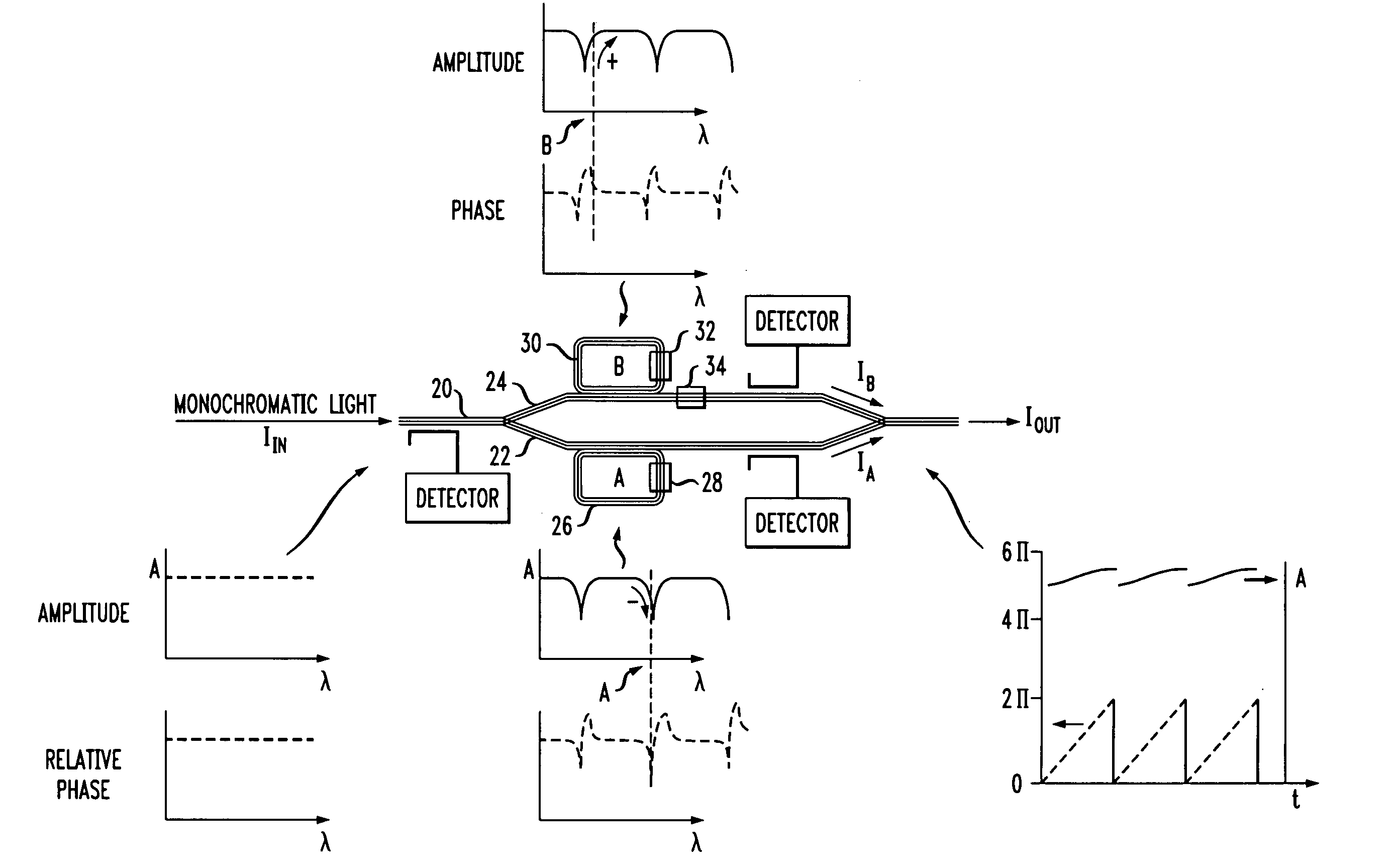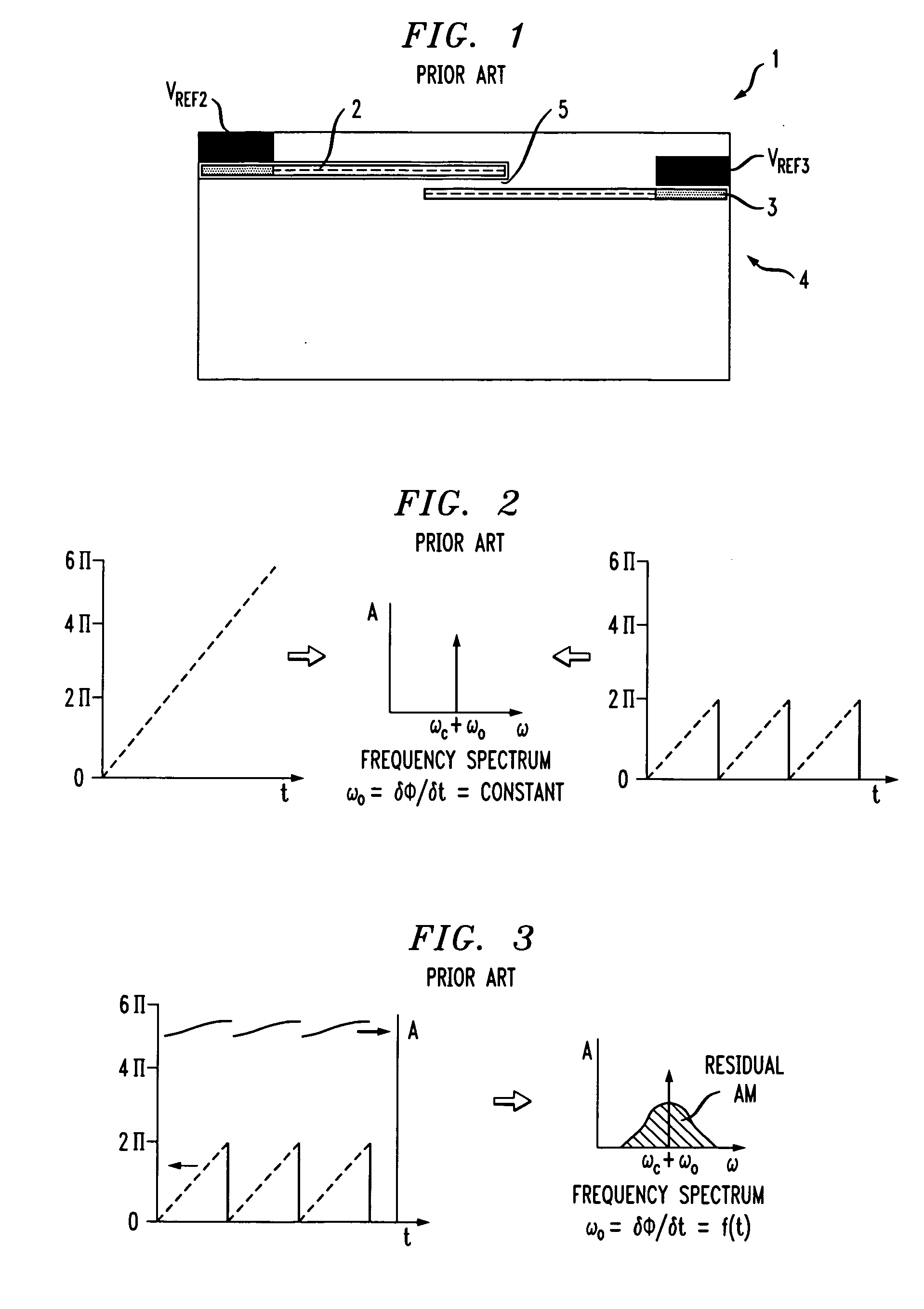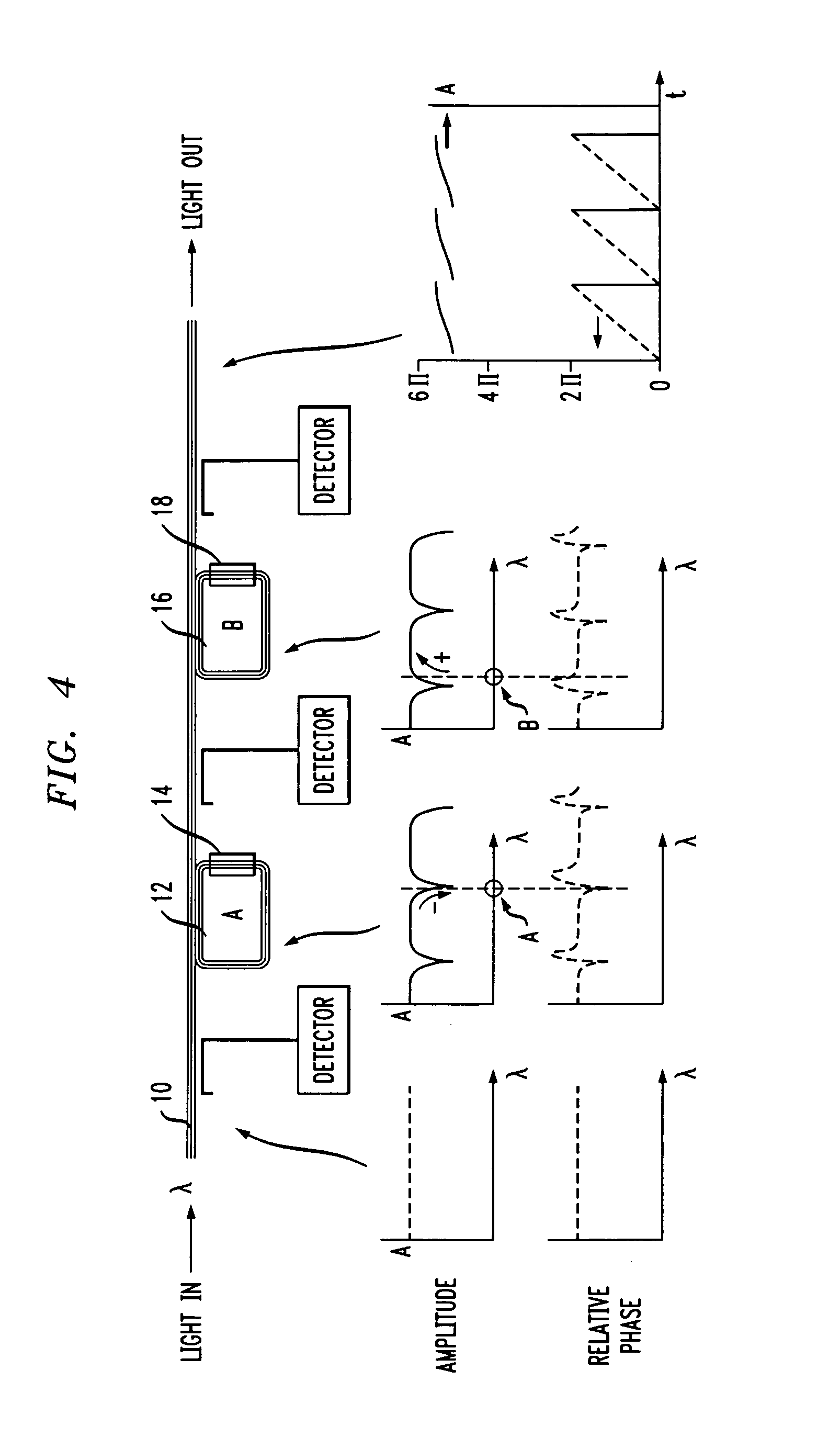Silicon-based electro-optic phase modulator with reduced residual amplitude modulation
a phase modulator and electro-optic technology, applied in the field of silicon-based electro-optic phase modulators, can solve the problems of unwanted amplitude modulation and affecting the amplitude of optical signals, and achieve the effect of improving the shape of phase and amplitude responses
- Summary
- Abstract
- Description
- Claims
- Application Information
AI Technical Summary
Benefits of technology
Problems solved by technology
Method used
Image
Examples
Embodiment Construction
[0019]An exemplary arrangement for substantially reducing the presence of amplitude modulation in a phase modulated output signal O from an electro-optic modulator is illustrated in FIG. 4. As shown, optical signal O is propagating along a waveguide 10, where in most cases waveguide 10 will comprise a relatively thin (less than one micron) silicon surface layer of a silicon-on-insulator (SOI) structure. Moreover, the “active region” of waveguide 10 is best confined in the manner described above in association with FIG. 1, which illustrates an “active region”5 having a relatively narrow width. Such an arrangement is important for single mode applications.
[0020]Referring again to FIG. 4, a first optical filtering element 12 (in this case, a ring waveguide) is disposed along waveguide 10 in a manner so as to out-couple a selected portion of the propagating signal. The Q of the ring (and as a result, the phase) defines the selectivity of the filter, where the higher the Q factor, the mo...
PUM
| Property | Measurement | Unit |
|---|---|---|
| wavelength | aaaaa | aaaaa |
| phase | aaaaa | aaaaa |
| difference wavelength | aaaaa | aaaaa |
Abstract
Description
Claims
Application Information
 Login to View More
Login to View More - R&D
- Intellectual Property
- Life Sciences
- Materials
- Tech Scout
- Unparalleled Data Quality
- Higher Quality Content
- 60% Fewer Hallucinations
Browse by: Latest US Patents, China's latest patents, Technical Efficacy Thesaurus, Application Domain, Technology Topic, Popular Technical Reports.
© 2025 PatSnap. All rights reserved.Legal|Privacy policy|Modern Slavery Act Transparency Statement|Sitemap|About US| Contact US: help@patsnap.com



